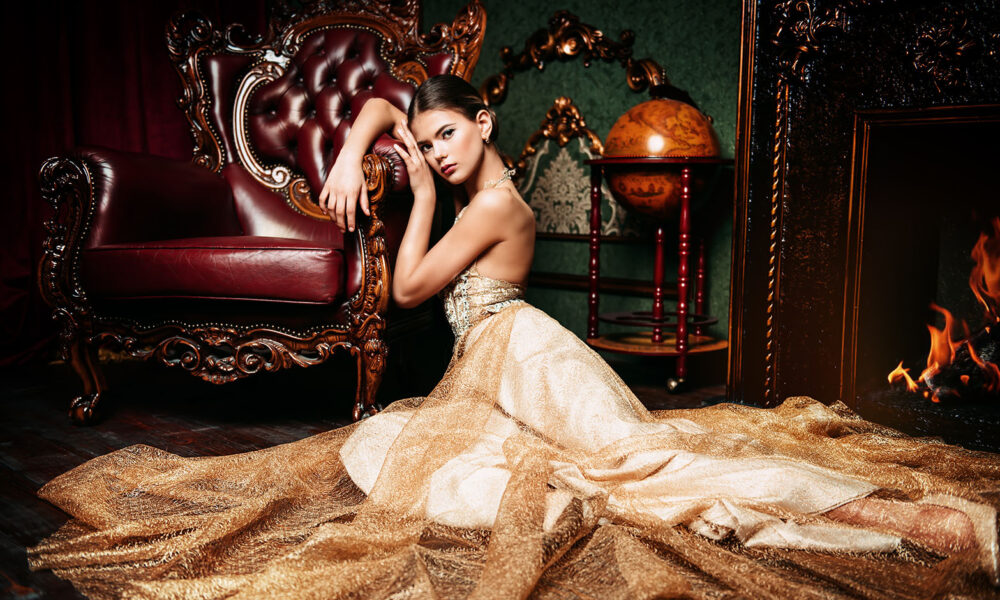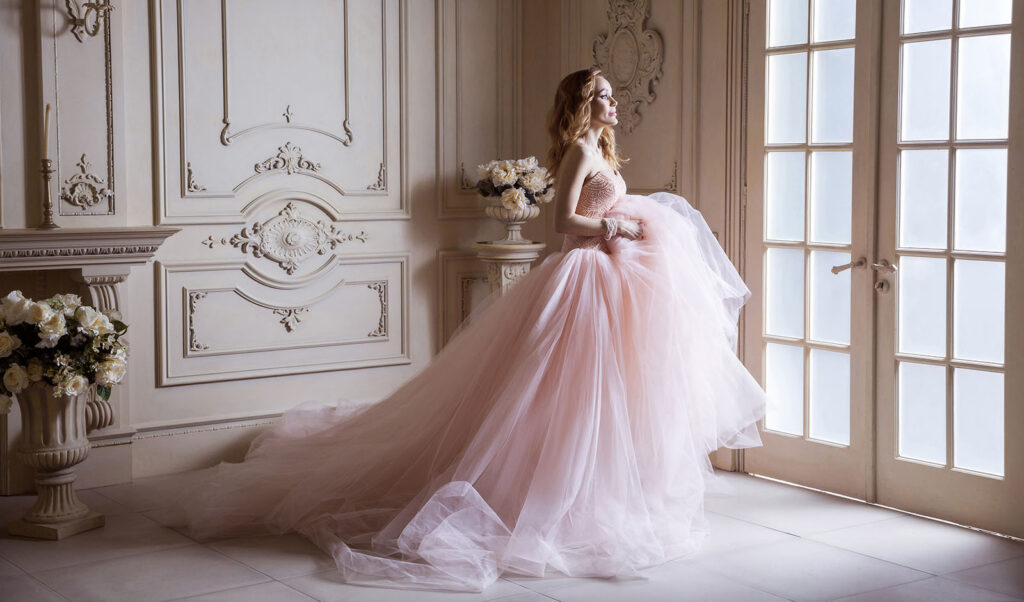

Here’s a situation we all know too well: you have a formal event around the corner, and you have nothing to wear! The dress you wore to your best friend’s wedding no longer fits. There’s another dress you could wear, but ugh, you don’t want to be seen in public wearing that dress!
So, what do you do? Jump online and find a new dress to wear, of course! Since 45% of dress searches are in reference to an event, more consumers prefer shopping for formal attire when they need to…and possibly at the last minute…
During your online shopping, you may see some dresses labeled as “gowns.” Is there a difference between a dress and a gown? And if so, which should you wear to your upcoming event?
The Difference Between a Dress and a Gown
Let’s cut to the chase–is there a difference between a dress and a gown? Yes, and the differences may surprise even the biggest fashionista.
What Is a Dress
Let’s start with the legendary dress. From the little black dress to the wedding dress, this piece has been a fashion staple for centuries; in fact, the first dress ever discovered dates back to Ancient Egypt!
But what is a dress? Surprisingly, there’s no official definition. A dress is a one-piece type of clothing that hugs the upper body and drapes down. A dress can end at the thighs (called a mini dress) or grace the ankles (known as a maxi dress).
Dresses are versatile. You can rock a casual sun dress to the beach or wear a formal dress to a business cocktail party. Some dresses are reserved for specific occasions, such as for a prom or wedding, but some may be in the “gown” category.
This leads us to our next point.
Gown
A gown describes a formal dress, such as most dresses worn by a wedding party (wedding dress, mother of the bride/groom dress, etc.) or on the red carpet. Most gowns are full-length, the shortest ones ending at the knee.
While gowns come in different styles, the basic shape is usually the same. Most gowns are close-fitting at the top (or bodice) and flare at the bottom.

Different Types of Dresses
As we said before, dresses are very versatile. There are numerous popular types of dresses that are fitting for certain occasions.
Maxi
Maxi dresses are long–the shortest ones reach your ankles, and some maxi dresses are floor-length. Some are form-fitting at the top and flow at the bottom, whereas other maxi dresses have a loose fit all over.
Because maxi dresses are long, they’re the perfect choice for any occasion. They can be dressed up or down; in other words, they can work for a formal event, depending on the dress and what you wear with it.
For example, a flowing sleeveless maxi dress is perfect for long days at the beach. Or you can wear a cardigan or blazer over that same dress for a comfortable evening ensemble.
Midi
A midi dress is a middle-length dress. Most midi dresses end at the calf, but shorter varieties end under the knee. It’s arguably the most versatile dress since it can work for nearly all occasions.
If you’re attending a formal event, a midi dress is classy and not too short–especially if you rock stockings underneath it. Certain midi dresses are also comfortable enough for casual days running errands. If it’s cold outside, pair your midi dress with a denim jacket for a chic and simple look.
Midi dresses work with all body types but are especially popular among petite women. Since midi dresses show a little leg, petite women look taller, especially when paired with heels or wedges.
Mini
Mini dresses are also called the “stop staring” dress for a reason! Mini dresses show off the legs, ending above the knee. Since mini dresses are scandalous in their style, they’re perfect for a date or a night at the club. Unless you wear opaque stockings underneath, this usually isn’t the pick for a formal occasion.

Different Types of Gowns
Things get more specific when we talk about different gowns. Gown categories are separated by occasion since some formal dresses may work better for specific events.
Wedding
While many consider this a “dress,” it’s usually technically a gown. Different types of wedding dresses vary between style, country, and culture. However, traditional and modern wedding attire often fit the “gown” category.
Most wedding dresses have the same appearance; the bodice is form-fitting, and the bottom part flares out, though how much and where it flares out depends on the style of the dress.
In addition, other wedding party outfits are usually in the “gown” category. This includes the bridesmaid and mother of the bride/groom dresses.
Ball
Think of a Disney princess – ball gowns are full-length dresses that drag on the floor. They’re form-fitting around the top and fall over the hips. Not all ball gowns have a train, but this is a common feature of these dresses.
While we’re likely not attending Disney princess balls in 2023 (I know, I’m also heartbroken), other occasions call for a classic ball gown. Most people would wear a ball gown to an exquisite dance, such as a prom.
Evening
An evening gown differs from other formal dresses since it’s a fancier ensemble. While one can wear an evening gown to a wedding or prom, evening gowns are broader since you can wear one to nearly any formal event.
Various types of evening gowns flatter all body types. Some trending evening categories include mermaid and a-line gowns.
The Difference Between a Dress and a Gown: Versatility Versus Elegance
The best way to identify the difference between a dress and a gown is to remember dresses are versatile, while gowns are reserved for formal occasions.
We hope this article helped you understand which dress or gown you should buy for your upcoming event. Now, there’s only one thing to do – go shopping!
























